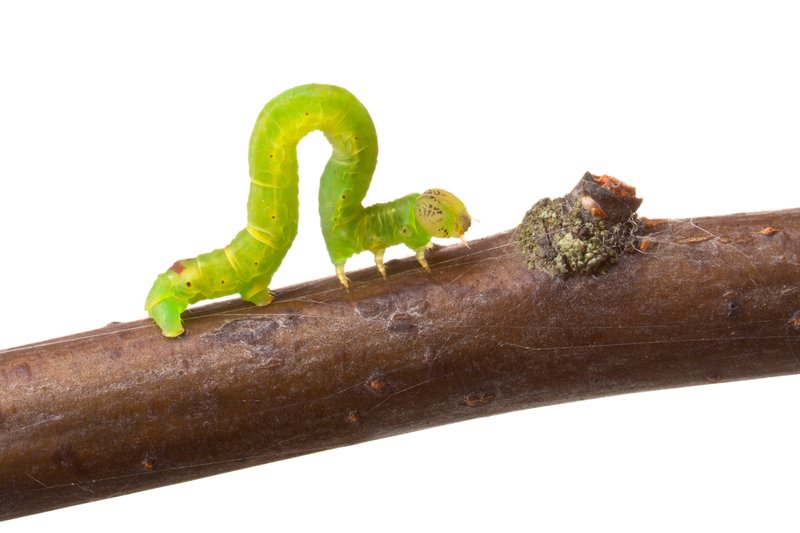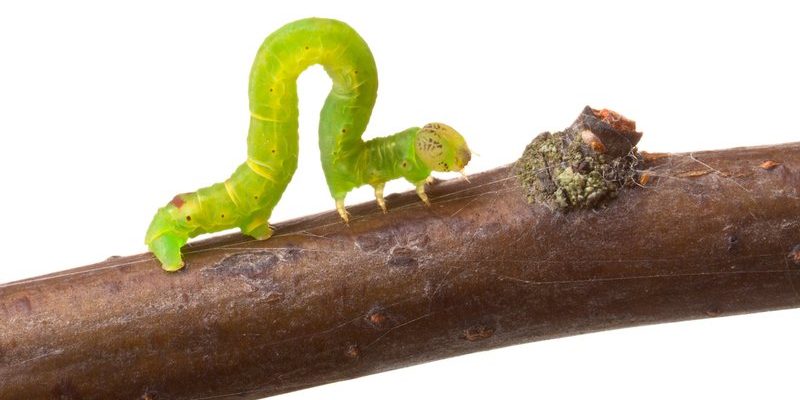
When you look closely, you’ll see that inchworms aren’t just ordinary caterpillars. They have a specialized anatomy that helps them thrive in their leafy environments. Get ready to dive into the world of inchworm anatomy, where we’ll explore how their legs and prolegs help them move, adapt, and even avoid predators. Trust me, you’ll be amazed at how much is going on in these tiny creatures!
The Basics of Inchworm Anatomy
Let’s start with the basics. An inchworm, also known as a measuring worm, belongs to the **Geometridae** family. Unlike typical caterpillars, these little guys have a unique way of moving—hence the name “inchworm.” They move in a characteristic looping motion that can remind you of a stretch in yoga. While inchworms might seem simple, their anatomy is quite intricate.
Inchworms have a soft, elongated body divided into segments, which makes them incredibly flexible. This flexibility is key to their movement style. Imagine doing a worm dance at a party— you’d need to bend and stretch, right? That’s exactly what inchworms do! Their bodies are covered in fine hairs, which help them sense their surroundings and navigate through the vegetation.
Understanding Their Legs
So, what about their **legs**? Inchworms have three pairs of true legs located on their thoracic segments. These are the legs that look similar to those of other insects. They’re mainly used for anchoring the body while inching forward. When you see an inchworm in action, it stretches out its front legs, then pulls the rest of its body forward. This process is really fascinating!
Here’s a fun visual: think of an inchworm as a tiny train. The true legs act like train cars—they help steer the motion, making sure the inchworm goes in the right direction. As it moves, the legs grasp onto leaves and branches, providing stability. This close connection to nature helps inchworms navigate their environment and find food.
Prolegs: The Secret to Their Motion
Now, onto **prolegs**—the unsung heroes of the inchworm’s movement! In addition to their true legs, inchworms have several prolegs found on their abdominal segments. These prolegs are not real legs; rather, they are soft, stub-like extensions that help the inchworm grip surfaces as it moves. They’re more like sticky fingers than actual legs.
When inchworms travel, they use their prolegs to anchor themselves while contracting their bodies. Imagine you’re climbing a climbing wall—you’d need your feet to grip onto the wall while you pull yourself up, right? That’s what inchworms do! By using their prolegs in conjunction with their true legs, they create a fluid, efficient motion that allows them to traverse various terrains—from tree branches to garden paths.
How Inchworm Motion Works
Inchworm motion might look simple, but there’s a lot of strategy involved. The inchworm’s unique “looping” motion is a dance of its legs and prolegs working together. Here’s how it typically goes down:
1. **Stretching**: The inchworm first extends its front segment and legs forward.
2. **Pulling**: It then contracts its body, pulling the rear end along.
3. **Anchoring**: The prolegs grip onto the surface to prevent slipping.
4. **Looping**: Finally, it loops back to its front segment, ready to repeat the motion.
This rhythmic combination lets the inchworm move stealthily, which helps it evade predators. Since they often mimic the environment around them, this unique motion can be an effective survival tactic. When you see them moving, it’s not just a simple journey—it’s a sophisticated maneuver that’s evolved over time.
The Role of Legs and Prolegs in Survival
Understanding how legs and prolegs work is crucial when you think about the inchworm’s survival. These features not only assist in movement but also play a role in their ability to escape predators. The inchworm’s slow, deliberate motion can often make them blend into their surroundings, resembling twigs or leaves.
When threatened, some species can even drop from their perch and hang in the air, using their prolegs to cling onto branches. Here, their anatomy is a perfect example of nature’s design—melding functionality with survival instinct. This ability to camouflage and move quietly means they have a fighting chance against hungry birds or other predators.
Comparing Inchworms to Other Caterpillars
If you’ve dealt with other types of caterpillars, you might wonder how inchworms stack up. Many caterpillars have a more straightforward movement style, relying solely on their true legs. For example, a common **cabbage caterpillar** uses its legs to crawl along surfaces without the looping motion of the inchworm.
In contrast, inchworms bring a unique charm with their distinctive movement and specialized anatomy. Plus, their appearance can vary greatly, with some sporting bright colors while others blend into their environment. This diversity adds to the richness of the insect world, making inchworms a fascinating subject compared to their cousins.
Inchworms might be small, but their anatomy is a testament to how creatures adapt and thrive. From their true legs to innovative prolegs, these little acrobats are more than just cute critters. Their looping motion is not only effective for movement but also plays a crucial role in their survival.
As you walk through a garden or park, take a moment to appreciate these tiny wonders. Next time you see an inchworm inching along, you’ll know the incredible story behind its anatomy and movement. Just remember, nature has its own way of creating beauty and efficiency, all wrapped up in the delightful package of an inchworm.

